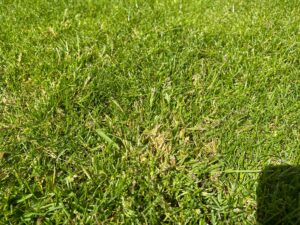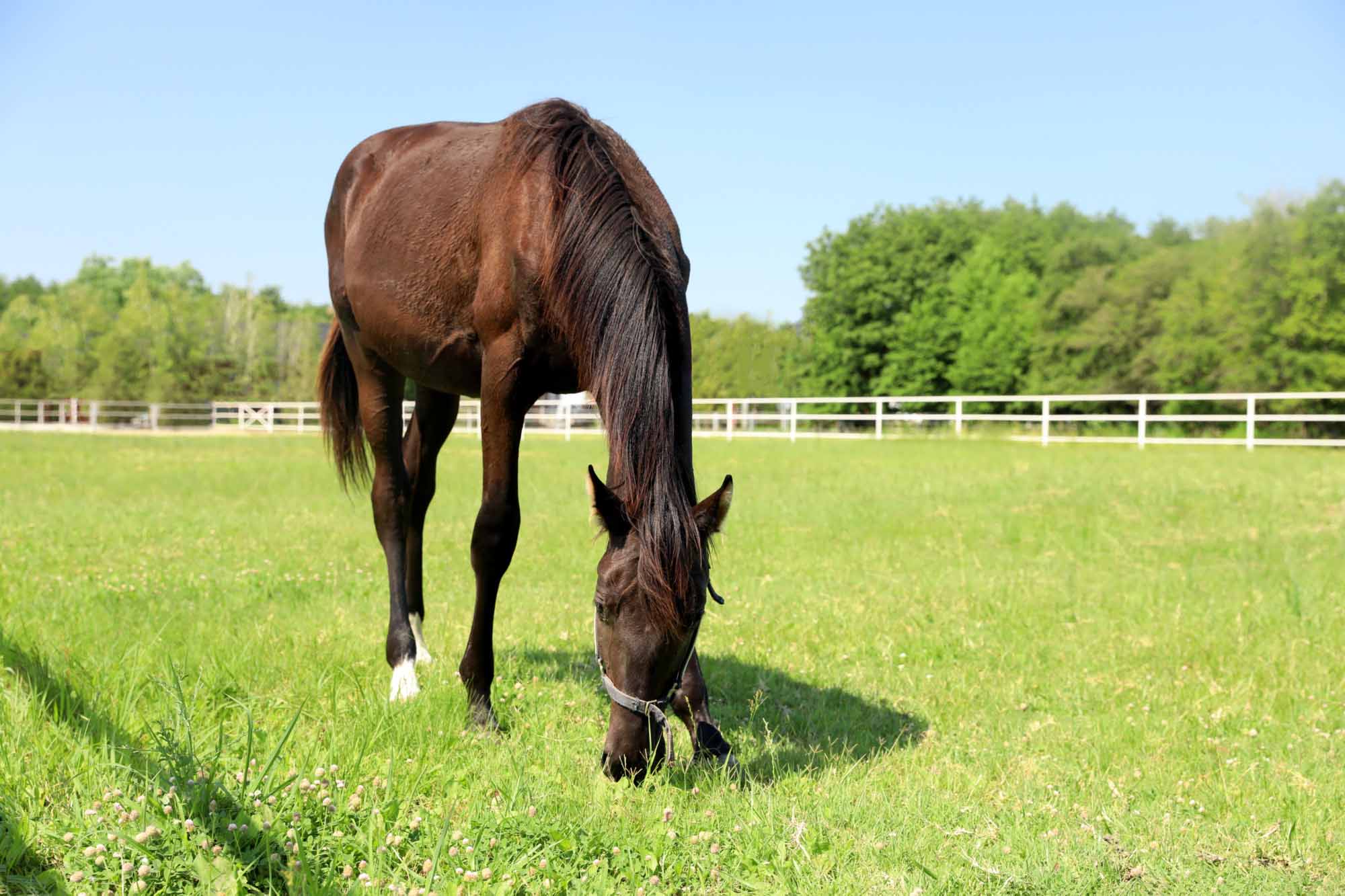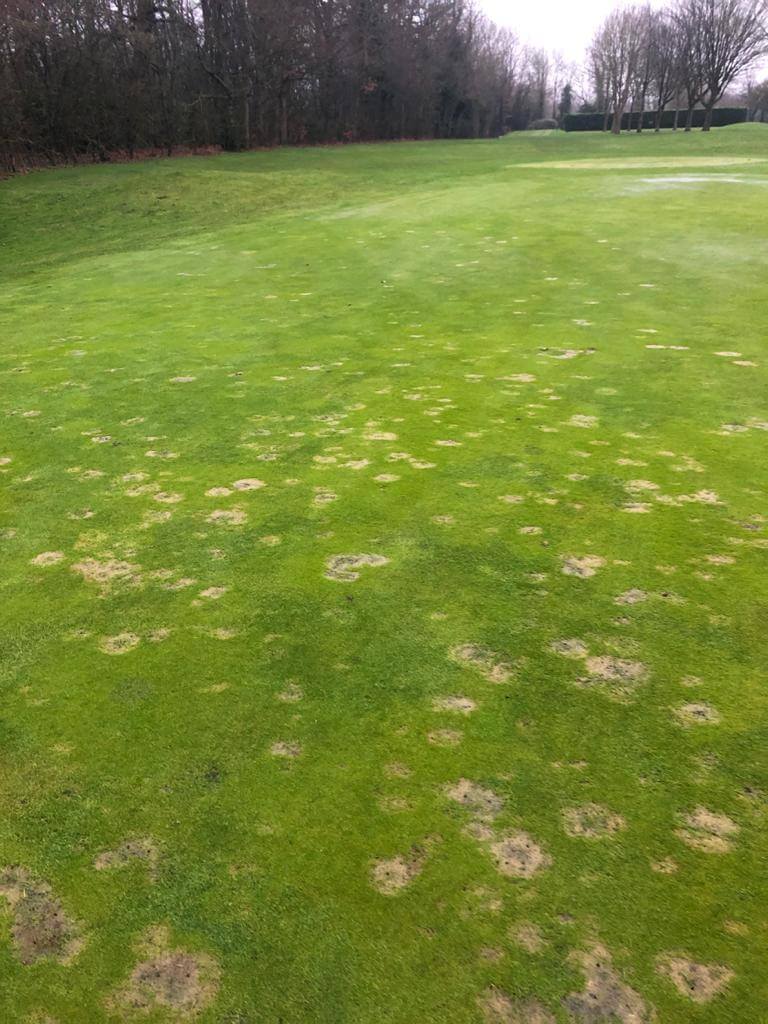A perfect lawn is the dream of every gardener, but behind the lush greenery can lurk a silent enemy. Fusarium disease in lawns can turn this dream into a nightmare. This fungal foe, driven by certain environmental and lawn conditions, presents a stubborn challenge for many green-thumbed enthusiasts.
From cool, moist weather to poor drainage, various factors contribute to the rise of Fusarium patch, targeting even the most cared-for grass types. The disease's symptoms are often misinterpreted, leading to a delay in treatment and further damage. Patches on the lawn and discoloured, unhealthy grass signal the invasion of this unwelcome guest.
With the right knowledge and tools, however, you can arm yourself against this adversary. In this article, we tackle Fusarium patch head-on, exploring its causes, signs of infection, and most importantly, how you can treat and prevent it. Whether you're waging war against an existing outbreak or fortifying your defences for the future, this guide is your ally in maintaining a healthy, picturesque lawn.
Causes of Fusarium Patch
Fusarium patch, a blight that leads to discoloured and damaged grass, is caused by the fungus Microdochium nivale. This pathogen finds its way into the grass plant through stomata or wounds on the plant surface. Ideal conditions for this disease include persistent humidity and a consistent dampness of the grass blades, conditions that are often exacerbated by imbalances such as high nitrogen levels in the soil or an elevated pH. Fusarium patch can linger in infected plant tissues and thatch, stealthily dispersing through both water and wind as they carry the infected debris across your lawn. This fungal enemy is notorious in cool, wet climates and is particularly aggressive during snowy periods, where it is referred to as snow mould. In addition to the weather, stressors such as excessive shade, inadequate drainage, a buildup of thatch, or a deluge of rainfall can exacerbate the susceptibility of your lawn to Fusarium patch disease.
Weather Conditions
Fusarium Patch finds its stride in the mild spells of autumn and winter. Shorter days and the diminished sunlight due to heavy cloud cover create a canopy for the disease to thrive. The delicate morning mists, so characteristic of the season, can linger into the day, further damping the lawn without adequate air movement to disperse the moisture. The spores of the Fusarium fungus, ever present and waiting, spring into action under these very specific conditions—closed in, damp, and poorly lit, where overnight temperatures remain above average, giving the Fusarium a comfortable habitat on your lawn.
Lawn Conditions
The susceptibility of a lawn to Fusarium Patch disease increases under certain conditions, especially in the cooler, wet days of autumn and winter. Lawns that are under duress — perhaps from being cut too short, being newly established, or experiencing general weakness — are more vulnerable. A plethora of conditions contributes to this vulnerability: a thatch layer that's too thick, soil compaction, inefficient drainage, and nutritionally unbalanced soil, particularly with excessive nitrogen fertilisation.
Grass Types Susceptible to Fusarium Patch

Annual Meadow Grass (Poa annua) with its tell-tale seed heads is very vulnerable to fusarium.
Annual Meadow Grass (Poa annua) rolls out the welcome mat for Fusarium Patch, but the disease isn't impartial and will infect other species as well, including Ryegrass, Bent and Fescue. These three species are far superior in terms of Fusarium resistance when compared to Annual Meadow Grass. In the case of Fescues, it it generally the case that if you create the conditions in which it thrives, you are inadvertently creating conditions in which Fusarium will not thrive.
Poor Drainage Issues
Fusarium Patch often finds a foothold in lawn areas with poor drainage. Standing moisture from ineffective drainage can create a breeding ground for the disease. The soil compaction that usually accompanies poor drainage means water cannot percolate effectively, turning what might have been a healthy lawn into a petri dish for Fusarium disease. Situational factors like heavy rains can amplify these drainage woes, and common culprits like excess thatch or dense overgrowth can block sunlight, reducing evaporation and worsening surface moisture issues—all perfect conditions for Fusarium Patch to prosper.
Symptoms of Fusarium Patch
The insidious emergence of Fusarium Patch manifests primarily through telltale patches on your lawn, which appear discoloured, spotty, and unhealthy. As the disease takes hold, gardeners may witness the development of brown or yellow circles on the grass, while the keen observer may notice fine filaments of white or pink mould adorning the affected areas. These symptoms typically arise during the milder, wetter periods of autumn and winter when daylight is scarce and conditions are just right for the disease to flourish.
Fusarium attacks begin as innocuous small spots, with a distinctive orangey-red-brown hue, which swiftly escalate, burgeoning into larger, pale, and lifeless circles. They carry a slimy white coating, which flags the advancement of the disease. As these spots enlarge, they frequently merge, creating large expanses of damaged turf. The pattern of these orange and brown areas spreading and merging is a classic signature of a Fusarium Patch infestation.
Appearance of Patches on Lawn
Fusarium patch, borne of the Microdochium nivale fungus, is well-known for the creation of discoloured brown patches upon traditional lawns. As autumn casts its shadow or mild winter spells linger, small yellowish patches embark on a demise that sees them expand and darken to a grim brown. Varied grass species, from the stately ryegrass to the humble annual-meadow grass, can succumb to the scarring left by Fusarium. The persistence of patches signals a battleground that requires strategic lawn care — proper feeding schedules and effective moisture management can be decisive factors in the steadfastness of a lawn plagued by Fusarium.
Changes in Grass Color and Density
Distinct among the symptoms of Fusarium patch is the gradual transition of turf coloration — from relatively modest yellow spots that amplify both in size and severity, merging to form larger, more sobering dark brown areas. This troubling sequence is most common during autumns and winters that are unduly wet and mild, especially when the turf is robbed of sunlight, strapped for air movement, and finds it challenging to dry out. The preemptive safeguard against such fungal woes hinges on the health of the lawn, where light, air, nutrition, and hydration converge to forge a robust defence.
Prevention and Treatment Options for Fusarium Patch
Keeping your lawn robust and Fusarium-free is a multifaceted task that hinges on keen attention to cultural practices and vigilance. The onset of milder weather conditions, typified by low light and reduced air movement, provides an advantageous environment for the Fusarium fungus, known scientifically as Microdochium nivale, to thrive and wreak havoc on your lawn. As the visible symptoms of brown patches emerge, they signal the need for both preventative methods and treatments to curb the spread of this disease.
Natural control often involves waiting out the conditions that favor Fusarium growth. The transition to colder temperatures, bolstered by increased light levels and improved air circulation, can naturally curtail the fungus's activity. For sustained disease management, these more hostile conditions to Fusarium must remain consistent; an abrupt return to mild, damp weather can quickly revive the fungal threat.
Chemical interventions, chiefly fungicides, can offer more immediate relief but are subject to stringent regulations, particularly for amateur gardeners, as residential use of professional treatments is often restricted or completely unavailable. This renders vigilance in lawn care and adoption of non-chemical prevention strategies even more pertinent. To safeguard your turf, employing cultural controls such as augmenting aeration and drainage—thereby enabling the grass to dry rapidly after rainfalls—pruning to encourage airflow, and abstaining from late-season nitrogen-heavy fertilisation is critical.
Ground temperatures that favour the fungus's activity range from 12-19°C (54-66°F). In summer, the infection can occur covertly, only becoming conspicuous when the weather cools and grass growth decelerates.
Proper Lawn Care Practices
Mitigating the risk of Fusarium Patch hinges on diligent lawn care habits. Regular aeration treatments tackle soil compaction, enhancing water infiltration and nutrient flow to grassroots. Coupled with scarification, which can also boost drainage and air circulation, your lawn becomes more resilient against Snow Mould and a host of other diseases.
Among other key practices is the judicious application of fertilisers. Foregoing high-nitrogen feeds in favour of low-nitrogen, high-potassium ones during autumn fortifies the plants without encouraging frail growth. Sharp mower blades, optimal grass length, and trimmed shrubs and trees to amplify airflow constitute additional defensive tactics against Fusarium Patch.
Fungicides and Treatment Products
Prevention is superior to curing when it comes to fusarium. Fungicides might offer a solution, yet their accessibility is dwindling and excludes domestic consumers. These restrictions necessitate an even stronger focus on preventative practices to mitigate the onset of the disease before reliance on chemical treatments becomes necessary.
Aeration and Improving Air Movement
Aeration procedures not only relieve compaction but also invigorate the lawn’s underfoot by boosting air and nutrient delivery to the root zone. Disrupting Fusarium spores and impeding their integration within thatch layers is another vital benefit of aeration. Encouraging diverse grass varieties like Perennial Ryegrass, Fescues and Bents through aeration further wards off Poa Annua and reduces Fusarium outbreaks.
Ensuring aeration throughout the lawn through various aeration techniques strengthens the turf, thereby maintaining lawn health and mitigating Fusarium Patch development.
Watering Techniques for Avoiding Wet Conditions
Avoid the pitfalls of overwatering by ensuring that your lawn dries quickly post-dew or rain; improved aeration and drainage are pivotal to this end. Pruning can also increase airflow and thus expedite drying. Manual dew removal or employing practices like scarifying and spiking are recommended to help control moisture levels.
Treating Poor Drainage Issues
Combatting soil compaction through aeration remedies one of the primary causes of waterlogging. Enhancing aeration, in conjunction with scarifying for better water absorption, forms a crucial front line of defence against poor drainage. The removal of dew in the mornings can be an effective daily practice for preventing diseases fostered by wet conditions, helping you to maintain a Fusarium-free lawn.
Common Mistakes in Dealing with Fusarium Patch
Gardening enthusiasts often pride themselves on lush, verdant lawns, but the occurrence of Fusarium Patch can quickly reduce a healthy lawn to a mottled, brown eyesore. A proactive approach is essential, yet certain common missteps can exacerbate the problem. Recognising these errors is key to maintaining a lawn that thrives throughout the year.
Ignoring Early Symptoms
One widespread mistake in lawn care is the dismissal of Fusarium Patch's early symptoms. What begins as inconspicuous yellow specks can mature into expansive brown blotches that amalgamate and disfigure your lawn. This misjudgment can propel the fungus to spread with alarming velocity, inflicting substantial turf damage. The roots of the issue often lie in soil compaction, which impedes water absorption and creates a haven for disease. Aeration is the champion here, relieving compacted soil and restoring efficient water infiltration, thus retarding the disease's progression. When these symptomatic whispers emerge, immediate intervention is key - whether this means employing a targeted fungicide, should one be accessible, or addressing the fundamental issues such as soil aeration and scarification.
Overuse of Chemical Treatments
Chemical treatments have long been the go-to for many lawn diseases; however, a reliance on such methods for Fusarium Patch management can be more harmful than helpful. The Royal Horticultural Society underscores the essence of minimum chemical intervention, focusing instead on sound cultivation routines. These affirmations echo the fact that amateur gardeners lack access to the fungicides that professionals may administer under strict regulatory parameters. Thus, before considering chemical options, it's advisable to invest in cultural enhancements, including soil improvement and regular aeration, to build an inherent resistance within the lawn.
Ineffective Watering and Drainage Solutions
The crux of many Fusarium Patch issues is insufficient drainage, often a consequence of lawn compaction or an onslaught of precipitation. Such suboptimal conditions pave the way for the proliferation of Fusarium blight. Turf that is water-stressed due to compacted soil displays a vulnerability to the disease, emphasising the significance of soil aeration and the resulting enhancement of water permeability. Particular species may also be more prone to Fusarium - especially Annual Meadow Grass (Poa annua). Other contributors like excessive shade from various sources can precipitate unnecessary moisture retention, inviting fungal activity. Recognising the telltale signs of Fusarium, the brownish or yellowing patches should prompt an assessment of watering practices and drainage efficacy, ensuring effective measures are in place to prevent or combat this persistent lawn adversary.
Long-term Management of Fusarium Patch
Managing Fusarium Patch requires a sustainable, long-term strategy focused not only on immediate symptom relief but also on bolstering turf resilience. Effective long-term management involves a multifaceted approach:
- Scarification: Regular scarification removes thatch and moss, which can choke grass plants and foster fungal growth. This intervention liberates the lawn, enabling greater access to sunlight, air movement, and essential nutrients, all of which can curtail the onset of Fusarium Patch.
- Nutrition: It's crucial to fertilise the lawn with an appropriate balance of nutrients. High potassium feeds in autumn are particularly beneficial as they strengthen the grass against diseases. By contrast, avoiding excessive nitrogen, especially when disease pressure is high, is essential to discourage the lush growth that Fusarium covets.
- Moisture Control: Dew suppressants and effective water management strategies ensure that surface moisture—Fusarium's ally—is kept in check. An emphasis on proper drainage, combined with strategic watering practices, helps prevent the conditions that Fusarium Patch favours.
Understanding the Life Cycle of the Fungus
Understanding the life cycle of Fusarium can allow homeowners to combat the disease proactively. This pathogen, causing the dreaded Fusarium Patch, has a preferred temperature range for proliferation between 12-19°C (54-66°F)—a mild spell that can occur anytime from late summer through winter.
The infectious cycle often unfurls at night, when temperatures dip to 0-10°C. Paired with leaf-wetness, these conditions are prime for Fusarium. Further, snow mould forms during spells in winter beneath snow cover, presenting an excellent environment for the fungus's growth.
Regular Lawn Inspections and Monitoring
Vigilance is vital to detect Fusarium Patch early. Regularly canvassing the lawn can reveal suspicious yellow patches, which can swiftly turn brown if Fusarium is at play. During wet conditions, the appearance of white or pink cottony fungal growth is a red flag that demands attention.
Alongside visual inspections, adopting robust cultivation practices such as aeration to alleviate soil compaction and improve drainage forms a cornerstone of regular maintenance. These practices, along with a cautious approach to nitrogen fertiliser application, especially in late summer and autumn, are crucial to keeping Fusarium at bay.














